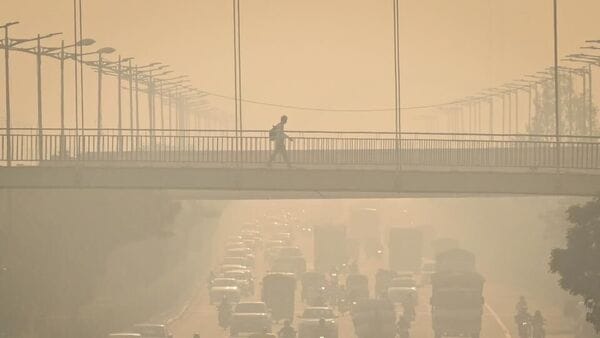- Delhi-NCR enters GRAP Stage II as AQI crosses 300. Stricter curbs now limit polluting vehicles and intensify public transport use to fight worsening air quality.

The Commission for Air Quality Management (CAQM) has enforced Stage II of the Graded Response Action Plan (GRAP) across Delhi-NCR after the region’s air quality slipped into the “very poor” category, with the Air Quality Index (AQI) crossing 300. The decision follows warnings from the IMD and IITM predicting further deterioration in the coming days.


Why was Stage II invoked?
The CAQM sub-committee, which reviewed pollution data on Saturday, noted the steady rise in AQI, from 296 at 4 pm to 302 by 7 pm and ordered immediate implementation of Stage II measures, adding to Stage I curbs already active since October 14. The panel has also instructed agencies to intensify dust mitigation efforts and ensure strict compliance with pollution control norms across Delhi, Gurugram, Noida, Ghaziabad and Faridabad.
Impact on automobiles and commuters
The escalation to Stage II has a direct bearing on vehicles plying Delhi-NCR roads. Entry of inter-state buses is now restricted to those running only on CNG, electric power or BS-VI diesel, with exemptions granted to all-India permit tourist buses. To discourage private vehicle usage, public transport fleets will be strengthened through the addition of CNG and electric buses, while metro services will operate at a higher frequency. Differential fare structures may also be introduced to encourage commuters to travel during off-peak hours.
The Delhi government has urged citizens to limit private car usage, opt for carpooling or public transport, and avoid idling engines at traffic signals to help reduce vehicular emissions, one of the biggest contributors to winter smog in the capital.
Construction and dust control measures
Authorities will step up inspections at construction and demolition sites to enforce dust control rules. Road sweeping and water sprinkling, particularly before peak traffic hours, have been made mandatory on identified stretches. Local bodies and RWAs are also required to supply electric heaters to security guards and sanitation workers to prevent the open burning of waste or biomass.
Background: Delhi’s recurring winter smog
Each year, the onset of winter sees Delhi’s air quality plunge due to unfavourable weather, vehicular exhaust, paddy stubble burning, and firecracker emissions. Experts note that breathing in Delhi’s polluted air is akin to smoking nearly 10 cigarettes a day, and prolonged exposure heightens risks of asthma, bronchitis, and cardiovascular diseases.
What each GRAP stage means for automobiles
- Stage I (Poor, AQI 201–300): Dust control at construction sites, enforcement of PUC checks, and mechanical road sweeping begin.
- Stage II (Very poor, AQI 301–400): Ban on diesel generator use (except emergencies), CNG/EV-only entry for inter-state buses, enhanced public transport, and restrictions on construction dust.
- Stage III (Severe, AQI 401–450): Ban on non-BS-VI light commercial vehicles, halt to construction activities (except essential projects), and parking fee hikes to discourage car use.
- Stage IV (Severe plus, AQI >450): Ban on truck entry (except essential goods), shutdown of schools and offices, and even odd-even vehicle restrictions if pollution persists.
Get insights into Upcoming Cars In India, Electric Vehicles, Upcoming Bikes in India and cutting-edge technology transforming the automotive landscape.
First Published Date: 20 Oct 2025, 09:38 am IST







